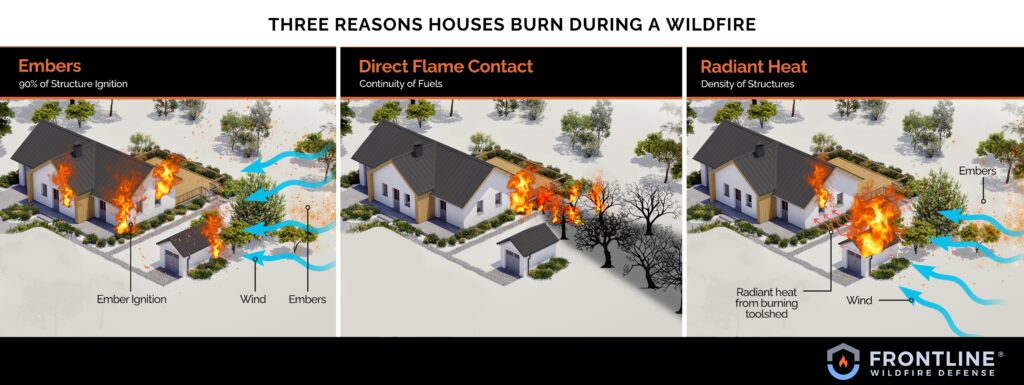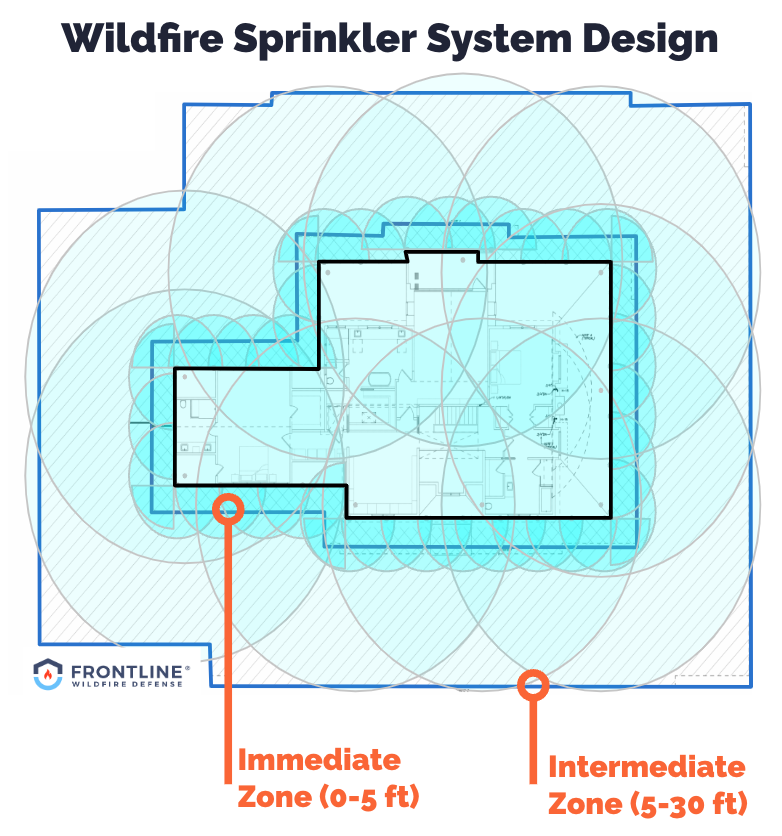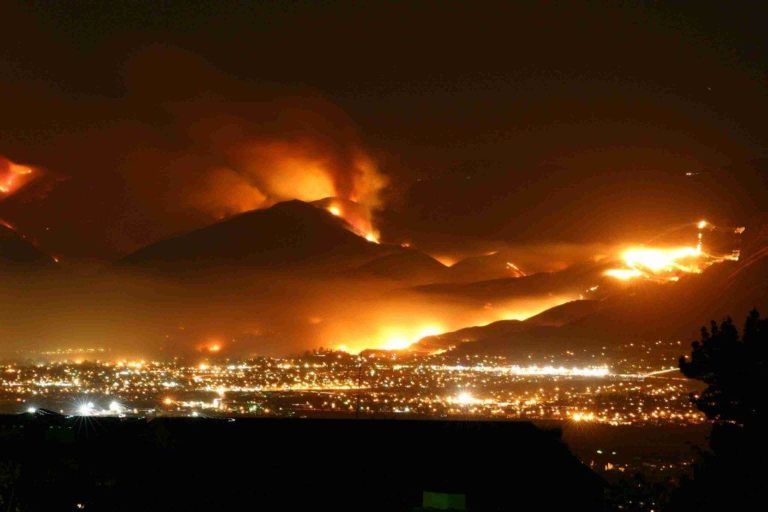How Homes Catch on Fire During a Wildfire
Embers are the #1 threat
Video courtesy of the Insurance Institute for Business & Home Safety
Flying embers are the cause of up to 90% of homes destroyed by wildfire
When we think about wildfires, we generally envision huge walls of flames engulfing homes. The reality is that most homes do not ignite from direct contact with a flame front. In fact, it’s estimated that 90% of homes are destroyed indirectly by wind-borne embers that are carried ahead of the fire perimeter. When the heat generated by an intense wildfire is combined with wind, small burning embers can travel several miles away from the fire perimeter.

Preventing ember ignition can save homes
In March of 2019 the Insurance Institute for Business & Home Safety (IBHS) simulated an active wildfire by showering embers on a duplex house structure in their test chamber in South Carolina. The house was built and landscaped on one side as a wildfire-resistant structure, and on the other side with common materials used when wildfire resistance is not a consideration. The wildfire-resistant side did not burn, highlighting the fact that if embers don’t have any fuel to ignite, the chance of a home being destroy by wildfire is reduced significantly.
Every home lost may have been due to ember ignition
A study of 2007 Witch and Guejito fires in San Diego indicates that potentially every home lost in the fire was impacted by some form of ember ignition. This was 74 homes in total. Conservatively, ember ignitions accounted for 55 out of the 74 homes destroyed. Embers were involved either by igniting vegetation that in turn ignited the structure or by directly igniting a home.

Too wet for embers to ignite
By creating an environment that is too wet to burn, the threat of ember ignition due to a wildfire can be greatly reduced. Focusing on hydrating Home Ignition Zones 0 and 1 (HIZ0 and HIZ1), it is possible to saturate the area around a home prior to exposure to embers. A study from the University of Minnesota on the Ham Lake Fire indicated that intermittent precipitation over a 24 hour period for HIZ0 and HIZ1 creates an environment around a home that will be too wet for ember ignition to take place. In this study, every home equipped with a working external wildfire sprinkler system survived the Ham Lake fire. Out of 104 total structures, 46 with working sprinklers all survived, while 38 of the structures with no sprinklers were lost.

The Frontline Wildfire Defense System
Our exterior wildfire sprinkler system was created to specifically address the threat of ember ignition. Backed by wildfire science, our system will greatly increase the chance of a structure surviving a wildfire. Contact us today to learn more and see if our system might be right for your home.
